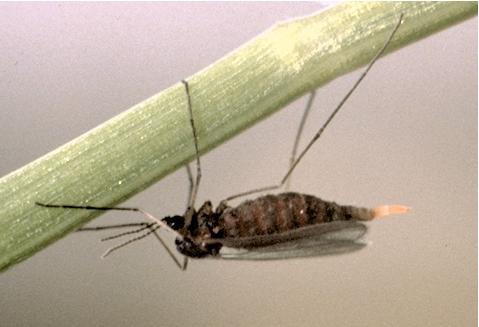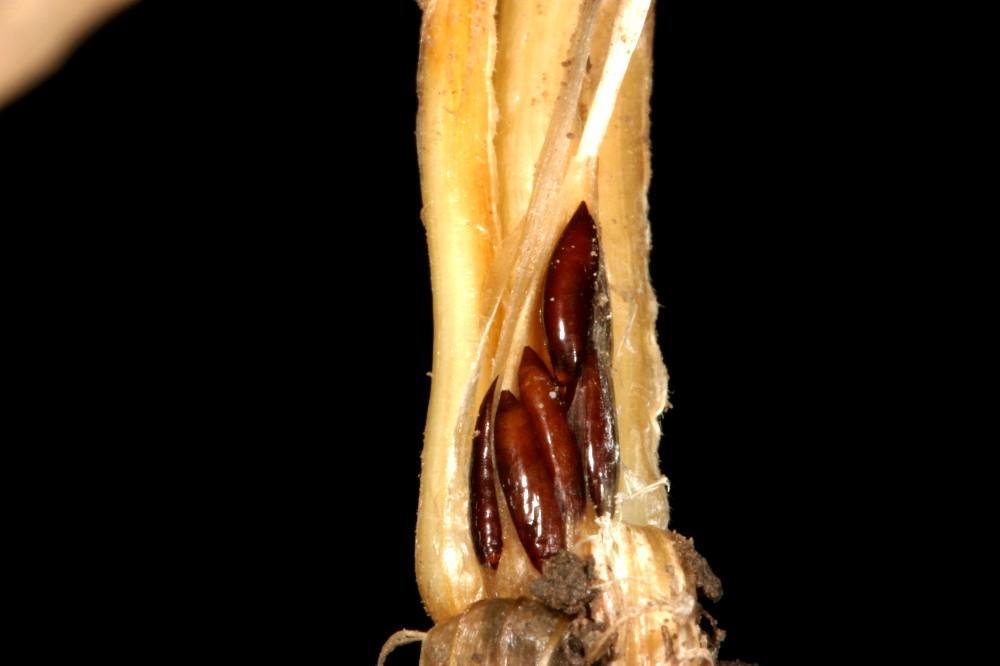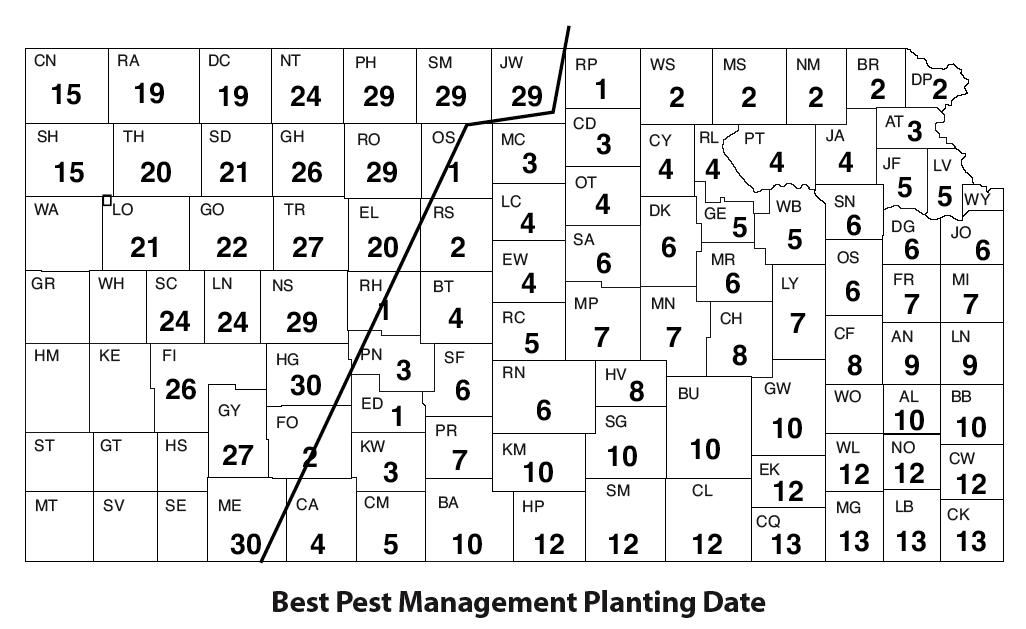Hessian Fly
Mayetiola destructor
|
Adult Hessian fly on stem. |
'Flax seed' pupae on wheat crown. |
Although the Hessian fly is present in most areas of the state, damaging populations are more common in central and eastern Kansas, and remain rare west of Salina. Injury is usually more serious during years of abundant rainfall and can occur in both fall and spring. All management is proactive and there are no remedial measures that can be applied after a field becomes infested. Infestations are often associated with wheat planted no-till, directly into the previous year’s wheat stubble. Fall infested plants have a characteristically thickened, dark bluish-green appearance and will often die off over the winter. Hessian flies overwinter in wheat as pupae commonly called flax seeds. Noticeable fall infestations are cause for alarm, because these give rise to the spring generation that causes lodging and potentially serious yield reductions. Infested plants will lodge in the spring, usually just above a node, and larvae or pupae will be visible on the stems when the leaf sheaths are carefully stripped away to expose the stems. No treatment is possible at this time, but significant lodging would suggest that more resistant varieties should be selected for next wheat crop, or planting delayed.
Control is usually based on prevention and depends upon sound management and area-wide cooperation. The important elements of fly management include: (1) planting resistant varieties where problems have occurred, especially when planting very early or very late; (2) destroying volunteer wheat; and (3) planting after the 'fly-free' planting date for your county. Recently, concerns have been raised that the fly-free dates may be out-dated, or insufficiently late in some years, given the effects of climate change and the fact that the data on which they are based is now almost 100 years old. Seed treatments carry label claims for early season protection and may have application in fly-prone areas when planting susceptible varieties before the fly-free date. However, the risk of infestation is usually difficult to predict. Neonicotinoid seed treatments will prevent fall infestation, but will not provide protection against spring broods.
Hessian Fly BMP Planting Date Map
Winter wheat variety ratings for Hessian fly resistance are available in KSRE publication MF991 Kansas Wheat Variety Guide 2023.
For more detailed information on the biology of the Hessian fly, see KSRE publication MF2866 Hessian Fly: Kansas Crop Pests.
Page last updated on 06/06/2024 by J.P. Michaud.


